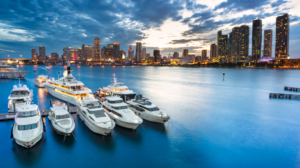
We need to create safe and durable coastal infrastructure. Here is where Marine structural design can be helpful. Engineers must consider various environmental factors in Antigua. They have to think about the strong waves and high tides. In addition, they also have to consider the changing weather conditions. Well-planned marine structures help in smooth trade. They also help in efficient transportation and economic growth.
To achieve stability and longevity, experts must use the right materials and innovative techniques. Through this short guide, you can learn more about marine structural design, complexities, etc.
Coastal Engineering Complexities
Coastal engineering in the Bahamas and Guyana focuses on constructing and maintaining structures in marine environments. Designing using the latest techniques, these structures can withstand harsh coastal surroundings. Engineers must assess multiple factors. For example:
- wave patterns
- tidal fluctuations, and
- corrosive effects of saltwater on building materials
They conduct thorough studies of soil composition. By doing so, they determine its ability to support heavy loads. Without a solid foundation, structures are at risk of erosion. They may not be stable. This can lead to potential failure. Therefore, engineers implement strategic measures to reinforce foundations. This is necessary for the long-term stability and safety of structures.
These engineers in St Kitts and Suriname priorities ecological sustainability and design projects. This minimize disruption to marine ecosystems. They do this by considering factors such as:
- water flow
- sediment movement
- natural behavior of marine life.
This approach helps protect biodiversity. It also helps maintain the efficiency of ports and marine structures.
Coastal landscapes in Saint Lucia and the Caribbean are continuously shaped by tides and waves. That means they are dynamic. A skilled engineer must anticipate these changes. They should create adaptable designs that withstand these shifts. For this, they use advanced technology, like computer simulations and predictive modelling. This way they identify potential risks.
By considering real-world conditions, the engineers develop solutions that improve the safety of marine infrastructure. It also increases its durability. Engineers take this proactive approach to make sure that for many years, the coastal structures remain functional and strong.
Structure Designing for Harsh Marine Environments: Challenges and Solutions
Creating structures for different coastal environments comes with many challenges. The constant exposure to saltwater can cause corrosion. This can result in weakening structures over time. High winds and powerful waves put additional pressure on buildings. So, it is important to use strong materials for structural design.
It is not easy to solve these challenges. For this, engineers use materials with anti-corrosive properties. For example:
- reinforced concrete
- marine-grade steel, etc.
They also apply protective coatings to prevent rust. Designers use flexible joints. These joints help structures absorb the strong waves’ impact without cracking.
Another major challenge is that the structures can withstand extreme weather conditions like hurricanes. To resolve it, engineers create designs that direct water flow properly. This helps in reducing the chances of flooding. It also helps in avoiding situations like structural damage. Regular inspections and maintenance further extend the marine’s infrastructure lifespan.
The Critical Role of a Marine Structural Engineer
These experts will do the planning. They are involved in the design and maintenance of coastal infrastructure.
By analyzing different environmental factors, these professionals assess site conditions. They select durable materials that can withstand harsh marine conditions. They make sure that ports, harbours, and offshore structures remain strong and secure.
They also see to it that all designs comply with safety regulations and industry standards. This helps in reducing risks associated with structural failure. Their expertise extends beyond durability. They also focus on sustainability.
Hence, use eco-friendly materials. Also, the use of innovative construction techniques helps minimize environmental impact. Collaboration is a key aspect of their work. A Marine structural engineer works closely with environmental specialists and construction teams. This coordination helps in developing well-integrated solutions.
They help in building resilient marine structures. The structures made by them serve functional needs. They also take steps to protect coastal ecosystems.
The work of these engineers is very complicated. So, for any such projects, you will have to hire a company that has proven expertise in this field.
Conclusion
Effective design of marine structures is required for building strong and reliable coastal infrastructure. Engineers must assess different challenges. They must choose the right materials for better durability. With the expertise of engineers, these structures remain safe. The ongoing research will continue to improve construction techniques. This will help in making marine infrastructure stronger and better.
For marine structure designing and building in St. Kitts and Nevis, you can contact E.F. Douglas and Associates. Our experts can provide all the guidance that you need.




